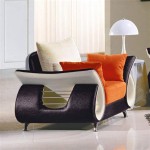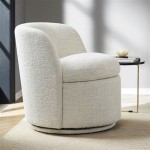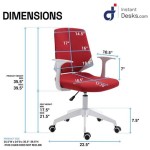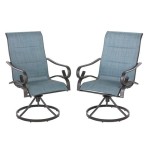Office Chairs Designed for Individuals Weighing 300 Lbs: A Comprehensive Guide
Selecting the appropriate office chair is crucial for maintaining comfort, promoting productivity, and supporting long-term health, particularly for individuals weighing around 300 pounds. Standard office chairs often lack the necessary build quality and ergonomic features to adequately support heavier users. The selection of a properly engineered and constructed chair is essential to prevent discomfort, back pain, and potential musculoskeletal issues. This article provides a comprehensive guide to understanding the key features and considerations when choosing an office chair designed to accommodate individuals weighing 300 pounds.
The weight capacity of an office chair is not the only factor to consider. Proper weight distribution, seat dimensions, back support, and adjustability are all critical components that contribute to a comfortable and supportive seating experience. Investing in a chair specifically designed for heavier individuals will provide improved stability, durability, and ergonomic support compared to using a standard chair beyond its intended weight limit.
Understanding Weight Capacity and Chair Construction
The primary consideration when selecting an office chair for individuals weighing 300 pounds is the chair's documented weight capacity. It is crucial to adhere to the manufacturer’s specified weight limit to ensure safe and reliable performance. Exceeding the weight limit can compromise the chair's structural integrity, leading to potential mechanical failures and increasing the risk of injury. Look for chairs that are explicitly certified for heavy-duty use, often indicated by terms such as "bariatric" or "heavy-duty" in the product description.
Beyond the weight capacity, the materials and construction of the chair play a significant role in its overall durability and longevity. A robust frame, typically made of reinforced steel, is essential for providing stability and supporting the user's weight. The base of the chair should also be constructed from a durable material, such as steel or reinforced nylon, to withstand the constant pressure and movement associated with daily use. The casters, or wheels, should be designed for heavy-duty use and capable of rolling smoothly across various floor surfaces without collapsing or breaking. Pay attention to the type of gas lift cylinder used in the chair. A high-quality, heavy-duty gas lift cylinder is essential for smooth and reliable height adjustment.
Examine the stitching and upholstery quality. Reinforced stitching is a sign of a well-constructed chair that can withstand the stresses of everyday use. The upholstery material should be durable and resistant to wear and tear, as well as provide adequate breathability to prevent discomfort from prolonged sitting. Leather, faux leather, and high-quality mesh are all common upholstery options, each with its own advantages and disadvantages in terms of durability, comfort, and maintenance.
Ergonomic Features and Adjustability
Ergonomics play a critical role in promoting comfort and preventing musculoskeletal problems, especially for individuals who spend extended periods sitting in an office chair. An ergonomic office chair is designed to support the natural curves of the spine, minimize pressure points, and encourage proper posture. Key ergonomic features to look for include adjustable lumbar support, adjustable seat height, adjustable armrests, and a tilt mechanism.
Adjustable lumbar support is arguably one of the most important ergonomic features. It allows the user to customize the level of support provided to the lower back, helping to maintain the natural curvature of the spine and reducing the risk of back pain. The lumbar support should be adjustable in both height and depth to accommodate different body types and preferences. Seat height adjustability ensures that the user's feet can rest flat on the floor while maintaining the correct angle at the knees and hips. This helps promote proper circulation and reduces strain on the lower back.
Adjustable armrests are essential for supporting the arms and shoulders, reducing strain on the neck and upper back. The armrests should be adjustable in height, width, and depth to accommodate different body sizes and work habits. Some armrests also offer adjustable angles to provide even greater customization. A tilt mechanism allows the user to recline slightly in the chair, reducing pressure on the spine and promoting circulation. Some tilt mechanisms also offer a tilt lock feature, allowing the user to lock the chair in a specific reclined position.
The depth of the seat is another important consideration. For taller individuals or those with longer legs, a seat with adjustable depth will provide better support and prevent pressure on the back of the knees. Look for a seat that allows for several inches of adjustment to accommodate a wider range of body types. Investing in an office chair with comprehensive ergonomic features and adjustability is crucial for creating a comfortable and supportive workspace that promotes long-term health and productivity.
Seat Dimensions and Comfort Considerations
The dimensions of the seat are a critical factor in ensuring comfort and proper support for individuals weighing 300 pounds. Standard office chairs often have seats that are too narrow or too shallow to accommodate larger body types comfortably. A seat that is too small can restrict circulation, create pressure points, and lead to discomfort and fatigue. When selecting an office chair, pay close attention to the seat width and depth, ensuring that it provides ample space for comfortable seating.
The seat width should be wide enough to comfortably accommodate the hips and thighs without feeling cramped or restricted. A seat width of at least 20 inches is generally recommended for individuals weighing 300 pounds. The seat depth should be sufficient to support the thighs up to the back of the knees, without creating pressure points. A seat depth of at least 19 inches is generally recommended. Some chairs offer adjustable seat depth, which allows the user to customize the seat to their specific needs and preferences.
The cushioning of the seat is another important consideration. The seat should be generously padded with high-density foam to provide adequate support and comfort. The foam should be resilient enough to maintain its shape and provide consistent support over time. Memory foam is a popular option for seat cushioning, as it conforms to the body's contours and provides excellent pressure relief. However, memory foam can sometimes retain heat, so it may not be the best choice for individuals who tend to overheat easily.
The material of the seat also impacts comfort. Breathable fabrics, such as mesh or perforated leather, are ideal for preventing overheating and promoting airflow. These materials help to wick away moisture and keep the user cool and comfortable, especially during long periods of sitting. Leather or faux leather seats can be more durable and easier to clean, but they may not be as breathable as mesh or fabric.
Before purchasing an office chair, it is highly recommended to try it out in person whenever possible. This allows the individual to assess the seat dimensions, cushioning, and overall comfort firsthand. If trying the chair in person is not feasible, carefully review the product specifications and customer reviews to get a better understanding of the chair's suitability.
Selecting an office chair designed for individuals weighing 300 pounds requires careful consideration of weight capacity, construction, ergonomic features, and seat dimensions. By prioritizing these factors, individuals can find a chair that provides optimal support, promoting comfort, productivity, and long-term health.
The investment in a quality office chair is an investment in well-being. A properly chosen chair can significantly contribute to a more comfortable and productive workday, minimizing the risk of musculoskeletal issues and enhancing overall job satisfaction.

Alden Design Steady 22 5 In Executive Chair 300 Lbs Capacity White Walmart Com

Serta Commercial Grade Task Office Chair Supports Up To 300 Lbs Dark Gray

9to5 Seating Acclaim High Back 300 Lb Executive Office Chair Weight Balanced Control Black 6 Way

Flash Furniture Mesh Swivel Office Chair In Black Go Wy 85 8 Gg

9to5 Seating Theory High Back 300 Lb Executive Office Chair Mesh Upholstered Seat Full Synchro Control Armless

Flash Furniture 24 7 Black Fabric Office Chair

Skyshalo Executive Office Chair With Lumbar Support 300 Lbs Capacity Flip Up Armrests And Pillow Metal

Serta Commercial Grade Task Office Chair Supports Up To 300 Lbs Black

Office Factor Chair 300lbs Weight Capacity Flip Up Arms Anti Scratch Wheels Mesh Back And Faux Leather Seat Lumbar Support Computer Ergonomic

9to5 Seating Cydia 300 Lb Upholstered High Back Executive Office Chair Knee Tilt Control Soft Touch Polyurethane Arms







